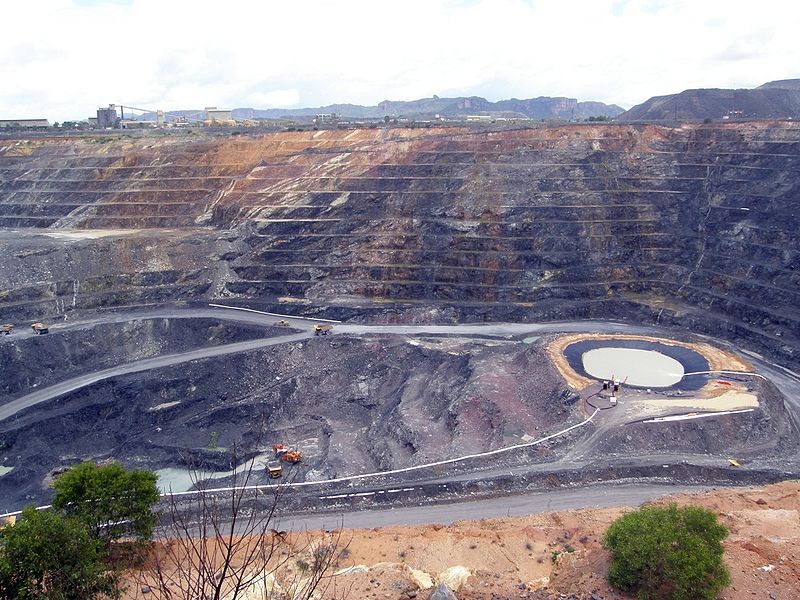Namibia, a country located in the southern part of Africa, is known for its vast landscapes, wildlife, and natural resources. One of the country’s most important resources, however, is uranium, which has propelled Namibia to become one of the leading uranium producers globally. Since the discovery of uranium deposits in the 1920s, Namibia’s role in the global uranium market has grown significantly, and today it stands as a key player in the energy industry. The strategic development of the uranium sector has brought both challenges and opportunities for Namibia, particularly in the context of global energy demands, environmental considerations, and economic growth.
This article explores the rise of Namibia as a leading uranium powerhouse in Africa, examining the history of uranium mining in the country, the current state of the industry, the impact on Namibia’s economy, and the future prospects for uranium in the global energy landscape.
1. The Discovery of Uranium in Namibia
The discovery of uranium in Namibia can be traced back to the early 1920s, when the first uranium occurrences were identified in the Namib Desert. However, it was not until the 1950s that commercial mining began to take shape. The first significant discovery occurred in the Rossing area, where uranium deposits were found in the Namibian Desert near the Atlantic Ocean. This was followed by more exploration in the late 1960s and early 1970s, as interest in uranium surged due to the global nuclear energy boom.
In the 1970s, the Rossing Uranium Mine was established by a joint venture led by the British firm Rio Tinto and a consortium of other international investors. This marked the beginning of Namibia’s uranium mining industry and set the stage for the country’s emergence as a global uranium producer. Rossing quickly became one of the largest uranium mines in the world, and its success helped to attract further investment in uranium exploration and production.
2. Uranium as a Key Component of Namibia’s Mining Sector
Uranium production has become one of the cornerstone industries of Namibia’s economy, alongside diamond and copper mining. Namibia’s vast uranium resources are located primarily in the central and northern parts of the country, in regions such as Erongo, Khomas, and Otjozondjupa. Over the decades, the country’s uranium reserves have expanded, and Namibia’s mines now supply a significant portion of the world’s uranium demand.
There are several key players in Namibia’s uranium mining industry, including Rossing Uranium, Langer Heinrich, and Husab Mine. Each of these mines has contributed to Namibia’s rise as one of the top global producers of uranium. According to the World Nuclear Association (WNA), Namibia is the fourth-largest uranium producer in the world, behind Kazakhstan, Canada, and Australia. Uranium accounts for a significant portion of Namibia’s export revenue, with the country exporting much of its uranium production to energy markets in countries like the United States, China, and France, where uranium is used to fuel nuclear power plants.
3. The Economic Impact of Uranium Mining in Namibia
The uranium sector has played a crucial role in Namibia’s economic development, particularly in providing employment opportunities and contributing to government revenues. The mining industry as a whole accounts for around 10% of Namibia’s GDP, with uranium mining representing a significant portion of that total. Thousands of Namibians are employed in the uranium sector, ranging from skilled laborers to engineers and geologists. The industry also supports a wide range of ancillary businesses, including transportation, catering, and security services.
One of the most notable economic benefits of uranium mining has been the substantial government revenues generated through taxes, royalties, and dividends. The Namibian government has strategically utilized the income from uranium mining to fund various development projects, particularly in the areas of infrastructure, healthcare, and education. Uranium wealth has also enabled the country to establish a Sovereign Wealth Fund, designed to manage the nation’s mineral resources and ensure long-term economic stability.
However, the uranium sector’s contribution to the economy has not been without challenges. The volatility of global uranium prices, influenced by factors such as nuclear energy demand, geopolitical developments, and international regulations, has had an impact on the sector’s stability. For example, the aftermath of the Fukushima nuclear disaster in 2011 led to a decline in global uranium prices, which in turn affected Namibia’s uranium industry. Nonetheless, Namibia’s strategic positioning as a leading uranium producer has enabled the country to weather some of these fluctuations.
4. Environmental and Social Considerations in Uranium Mining
As Namibia has expanded its uranium mining activities, environmental and social concerns have become central to the debate surrounding the industry. Uranium mining, like other forms of mining, can have significant environmental impacts, including land degradation, water usage, and radiation risks. Namibia’s uranium mines operate in arid desert regions, where water is scarce, raising concerns about the sustainability of mining operations in these areas.
The Namibian government has implemented strict environmental regulations to mitigate the impacts of uranium mining. These regulations focus on minimizing the environmental footprint of mining activities, including measures to manage waste, ensure the safe storage of uranium tailings (the byproducts of uranium extraction), and protect the country’s water resources. Mining companies are also required to adhere to stringent safety protocols to protect workers and nearby communities from radiation exposure.
Additionally, the mining industry has been criticized for its social impact, particularly in terms of the displacement of local communities and the lack of meaningful benefits for surrounding populations. While the industry has created jobs, there are ongoing concerns about income inequality, labor rights, and the distribution of the wealth generated by uranium mining. The Namibian government and mining companies have worked to address these issues through community development programs and employment initiatives, but the debate over how to ensure that the benefits of uranium mining are more broadly shared remains ongoing.
5. Uranium and Namibia’s Role in Global Energy Markets
Namibia’s uranium industry plays an essential role in the global nuclear energy market. With the increasing demand for low-carbon energy sources, nuclear power has gained renewed interest as a reliable and clean alternative to fossil fuels. As one of the top producers of uranium, Namibia is well-positioned to meet the growing demand for uranium, particularly as countries such as China, India, and Russia expand their nuclear energy programs.
Namibia’s uranium reserves are expected to remain an important asset for the country in the coming decades. According to estimates, the country has more than 200,000 tonnes of uranium in proven reserves, which is enough to maintain a significant presence in the global uranium market for years to come. This positioning could provide Namibia with a competitive advantage in the global energy transition, as more nations seek to diversify their energy sources and reduce their reliance on coal and oil.
In addition to supplying uranium for nuclear power, Namibia is also exploring new opportunities in nuclear technology. The country has been actively working to establish a nuclear research and development program and has been involved in international discussions on nuclear energy policy. Namibia’s strategic vision includes positioning the country as a hub for nuclear energy expertise in Africa, which could offer new avenues for economic growth and technological innovation.
6. The Future of Namibia’s Uranium Industry
Looking to the future, Namibia faces several opportunities and challenges as it seeks to maintain its status as a leading uranium producer. The global demand for uranium is expected to remain robust, driven by the ongoing expansion of nuclear energy programs and the need for stable, low-carbon energy sources. Namibia’s vast reserves of high-quality uranium place the country in a strong position to continue playing a key role in the global uranium market.
However, challenges remain, particularly in terms of the sustainability of uranium mining operations and the equitable distribution of the wealth generated by the industry. As uranium mining continues to expand, Namibia will need to balance economic growth with the need to protect the environment, safeguard the health of its citizens, and ensure that all Namibians benefit from the country’s mineral wealth.
Efforts to diversify the economy, reduce reliance on mining, and invest in sectors such as renewable energy, agriculture, and tourism will be key to securing Namibia’s long-term prosperity. Moreover, global trends in energy transition and nuclear policy will continue to shape the future of uranium mining, presenting both risks and opportunities for Namibia’s uranium industry.
Namibia’s rise as a leading uranium powerhouse in Africa is a testament to the country’s strategic exploitation of its natural resources. The uranium sector has been instrumental in Namibia’s economic development, providing significant revenues, creating jobs, and positioning the country as a key player in the global energy market. However, challenges such as environmental concerns, social inequality, and global market volatility remain, requiring careful management and a commitment to sustainable development.
As Namibia continues to navigate these complexities, its uranium industry is poised to remain a central pillar of its economy, offering both opportunities for growth and a path toward a more sustainable and equitable future. With the right policies and continued investment, Namibia’s uranium sector can help propel the country into a new era of economic prosperity and global influence.













